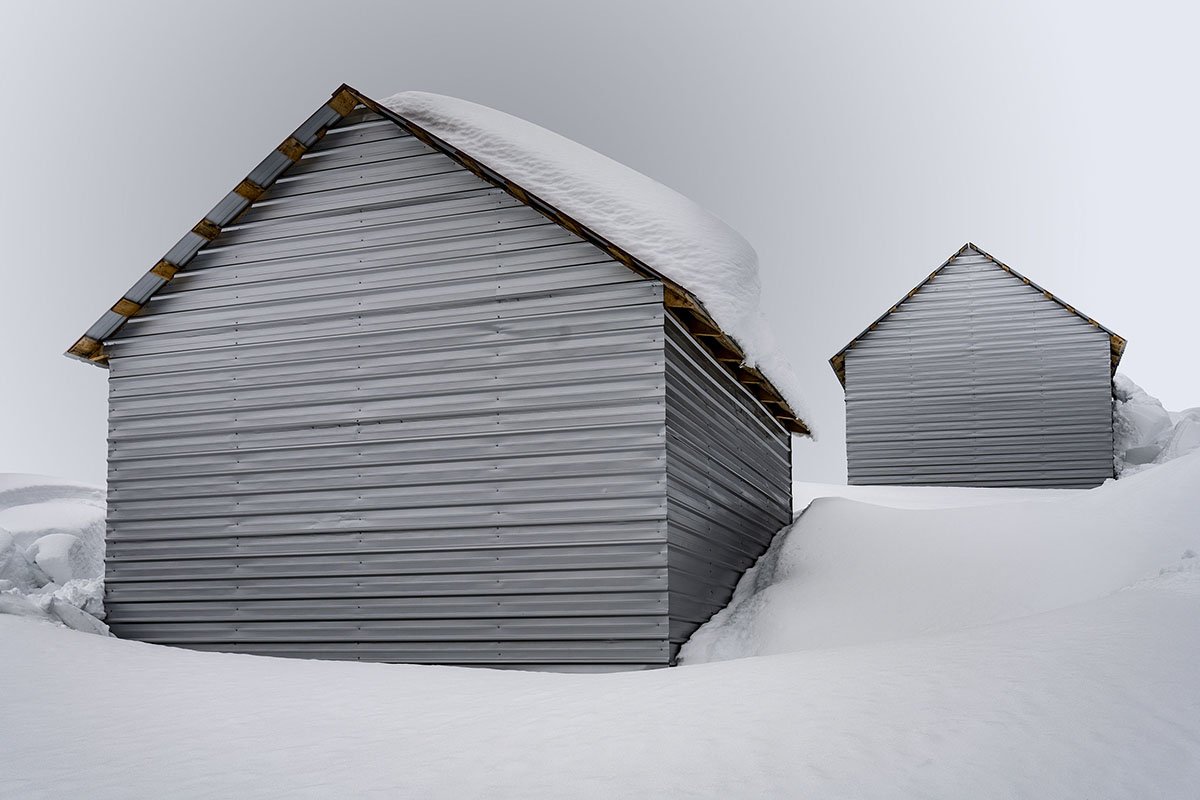The images depict humble huts standing proudly against a pristine backdrop of deep snow. As if emerging from a dream, these structures emanate a sense of calm and meditation. The absolute silence portrayed in Zirwes’ work mirrors the coolness in the air, not a biting cold, but a refreshing coolness that envelopes the viewer.
The artist plays with minimalist shapes and colors, creating walls and roofs that form a striking contrast with the abstract snow formations. Triangles, acute and obtuse angles, trapezoids, corners, edges, and slopes dance across the canvas, engaging in a visual dialogue with the snowy environment. The huts, whether standing alone or in small groups, appear detached and almost random, as if lost in the snow, challenging their belonging to the surroundings.
Zirwes’ “Bakhmaro Huts” series was brought to life in a region known for its harsh, long, and snowy winters. These huts, however, are not traditional residences but simple structures crafted by their future users. Constructed from readily available materials using a straightforward design, they serve as markers of their owners’ place in the landscape.
Unlike alpine, mountain, or hunting huts, these structures aren’t meant for year-round living or as shelters for shepherds or hunters. They don’t cater to winter sports enthusiasts as ski huts do, nor do they serve as temporary shelters for those fleeing storms, war, persecution, or climate change. Zirwes deliberately steers clear of making a political or societal statement, avoiding the associations with protests against construction projects seen in previous decades.
Instead, these huts bear a resemblance to Finnhütten, described as “roof-only houses.” They serve as simple retreats, offering respite to city dwellers weary of civilization. Comprising only four thin walls made of wood, metal, and corrugated iron, topped with a pitched roof, these huts lack doors and windows, deliberately limiting interaction with the outside world.
Bakhmaro, nestled at an altitude of 1950 meters in the Lesser Caucasus, stands higher than well-known Swiss mountain resorts. Families from the surrounding area use these huts in the high valley during the summer, benefiting from the combination of mountain and sea air from the nearby Black Sea. In recent years, winter has not left Bakhmaro uninhabited, drawing freerider hermits seeking the untouched winter landscapes for cat skiing adventures.
As winter tourism gains momentum in this structurally weak region, a law is on the horizon to halt new construction. The doorless and windowless huts, captured by Zirwes, emerge as a swift response to this impending change. They stand as temporary guardians, keeping the space clear to protect existing buildings while symbolizing a hope for a better future.
Each hut in Zirwes’ series becomes a portrait of this hope, a silent testament to the delicate balance between nature and human intervention. The deceptive beauty that captivates viewers in these images invites contemplation and reflection, urging us to appreciate the simplicity of the moment amid the vast and untouched beauty of Bakhmaro.


